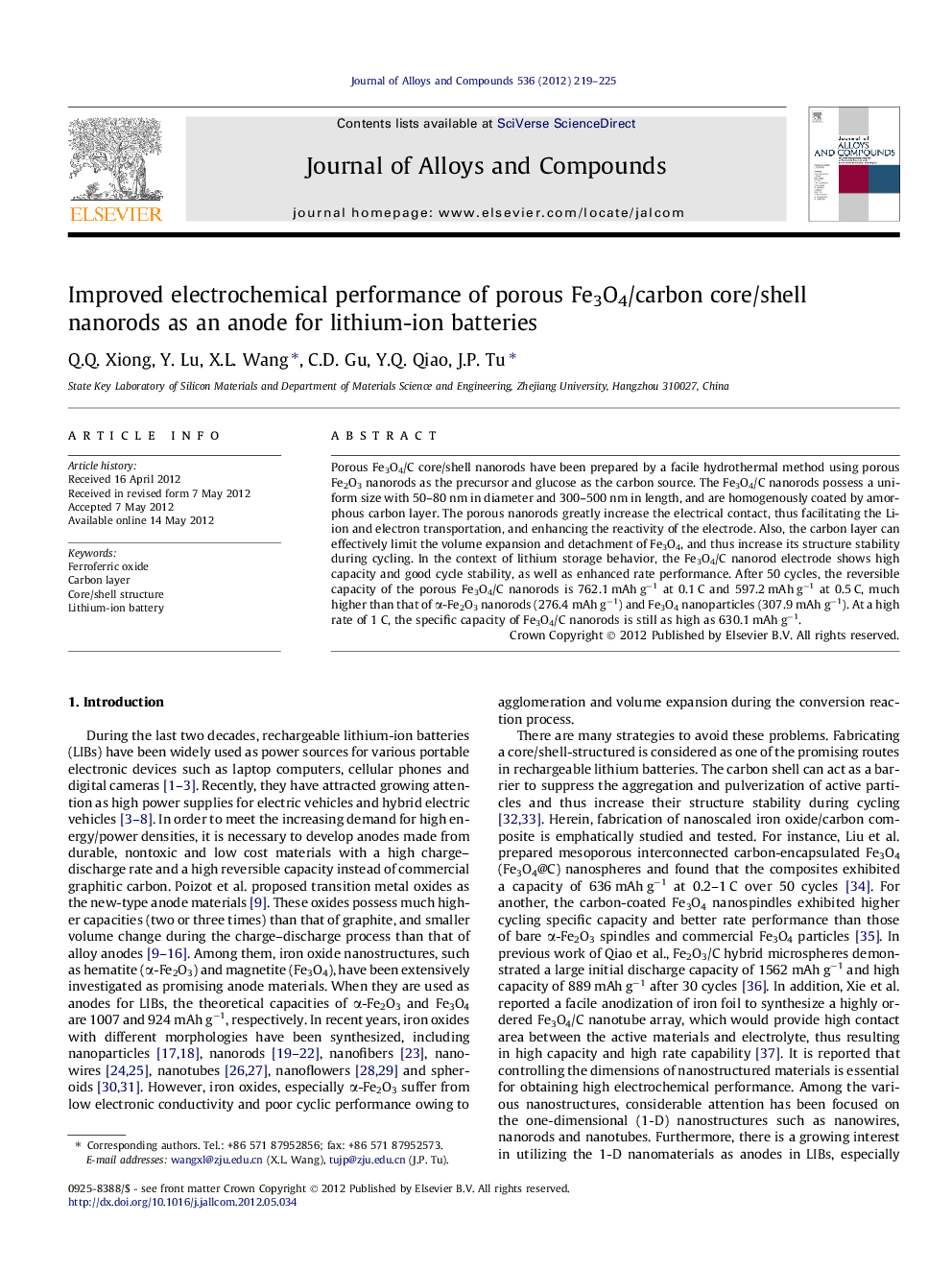| Article ID | Journal | Published Year | Pages | File Type |
|---|---|---|---|---|
| 1615796 | Journal of Alloys and Compounds | 2012 | 7 Pages |
Porous Fe3O4/C core/shell nanorods have been prepared by a facile hydrothermal method using porous Fe2O3 nanorods as the precursor and glucose as the carbon source. The Fe3O4/C nanorods possess a uniform size with 50–80 nm in diameter and 300–500 nm in length, and are homogenously coated by amorphous carbon layer. The porous nanorods greatly increase the electrical contact, thus facilitating the Li-ion and electron transportation, and enhancing the reactivity of the electrode. Also, the carbon layer can effectively limit the volume expansion and detachment of Fe3O4, and thus increase its structure stability during cycling. In the context of lithium storage behavior, the Fe3O4/C nanorod electrode shows high capacity and good cycle stability, as well as enhanced rate performance. After 50 cycles, the reversible capacity of the porous Fe3O4/C nanorods is 762.1 mAh g−1 at 0.1 C and 597.2 mAh g−1 at 0.5 C, much higher than that of α-Fe2O3 nanorods (276.4 mAh g−1) and Fe3O4 nanoparticles (307.9 mAh g−1). At a high rate of 1 C, the specific capacity of Fe3O4/C nanorods is still as high as 630.1 mAh g−1.
► We prepared porous Fe3O4/C core/shell nanorods by a facile hydrothermal method using porous Fe2O3 nanorods as the precursor. ► The Fe3O4/C nanorods are homogenously coated by an amorphous carbon layer. ► The Fe3O4/C nanorod electrode shows high capacity and good cycle stability, as well as enhanced rate performance.
